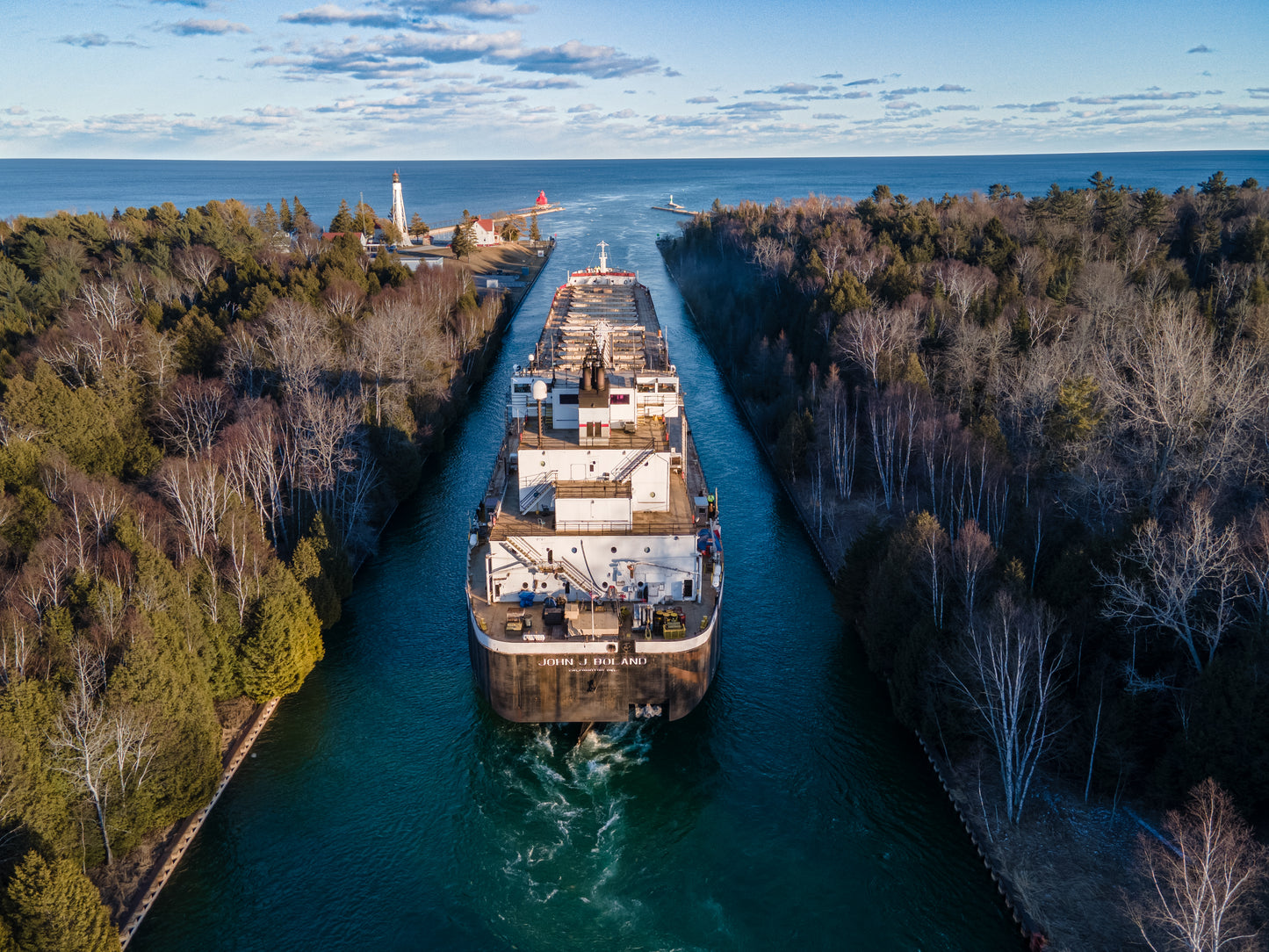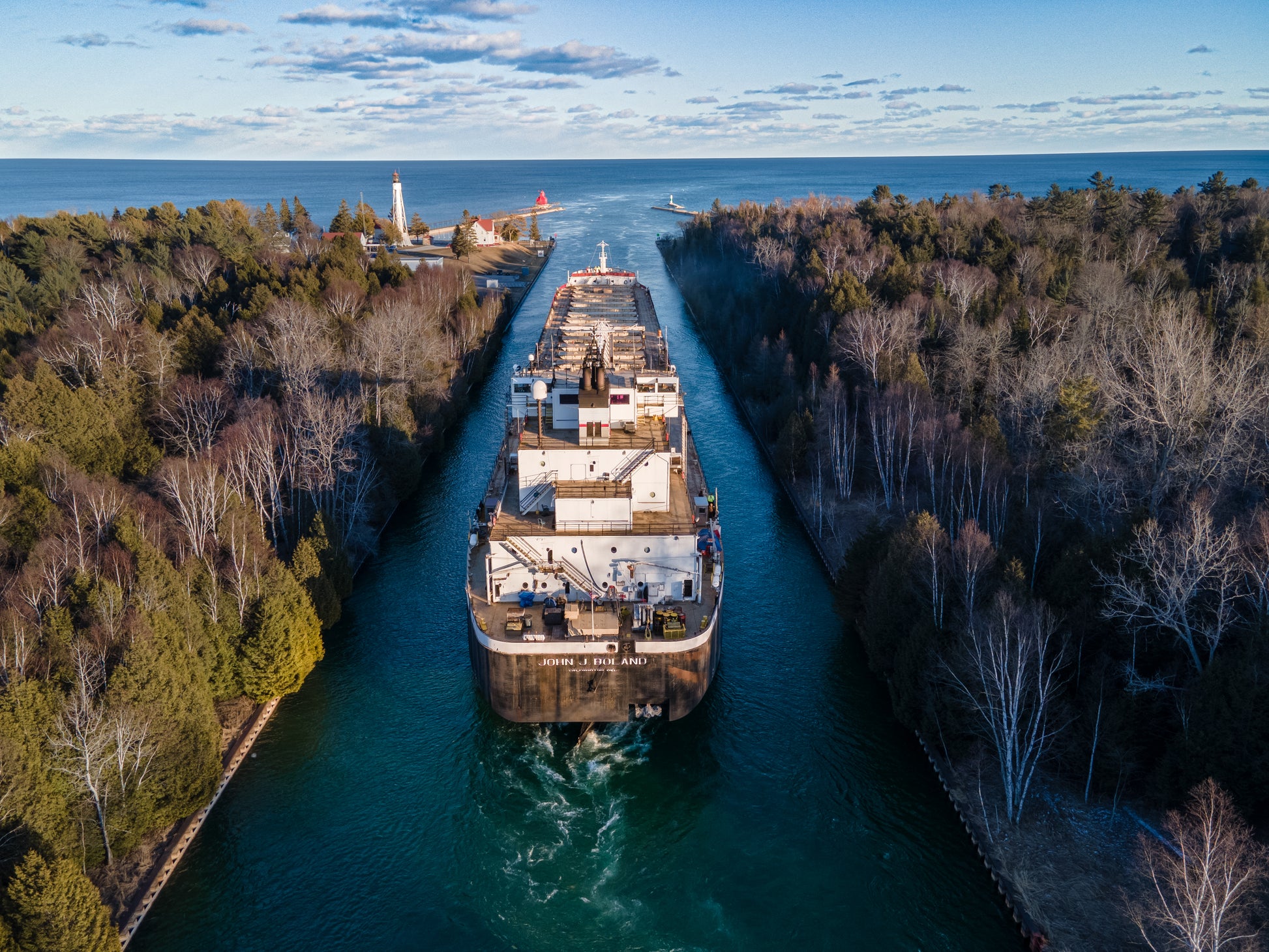Boland Exit
Boland Exit
Couldn't load pickup availability
The John Boland powers forward, leaving Bay Shipbuilding behind as it makes its long-anticipated exit from winter layup. After months of maintenance and preparation, the freighter now glides through the Sturgeon Bay Canal, its stern framed against the deep blue water while a swirl of aqua forms in the prop wash behind it. The bow is just moments from passing the Coast Guard Station, the last landmark before breaking into the open expanse of Lake Michigan. The bright spring sunlight highlights the vessel’s crisp lines, though the bare trees along the shore hint at a season still in transition.
Built in 1973, the John Boland has spent decades hauling iron ore, coal, and other bulk materials across the Great Lakes, its work dictated by the rhythm of the shipping season. Each year, as ice locks the lakes in winter’s grasp, freighters like the Boland return to Sturgeon Bay for layup, where Bay Shipbuilding, one of the largest shipyards on the Great Lakes, performs vital repairs and maintenance. The moment captured in this image marks the start of a new shipping season, as the vessel emerges from months of stillness to resume its journey across the inland seas.
The Sturgeon Bay Canal, completed in 1881, has long served as a crucial gateway for ships moving between Green Bay and Lake Michigan. By cutting through the Door Peninsula, the canal provides a safe and efficient passage, avoiding the unpredictable waters of Death’s Door to the north. At the canal’s eastern end, the Sturgeon Bay Coast Guard Station stands watch, a sentinel of maritime safety since 1886. Tasked with search and rescue operations, icebreaking, and navigational aid maintenance, the station has played a vital role in ensuring that vessels like the John Boland can safely navigate these waters year after year.
This photograph captures a defining moment in the life of a Great Lakes freighter—the transition from winter dormancy to the vast possibilities of the shipping season ahead. The deep blues of the channel contrast with the open lake just beyond, marking the threshold between sheltered waters and the unpredictable waves of Lake Michigan. It is a scene of movement, of renewal, and of a tradition that has shaped the maritime history of Door County for generations.
All prints are of museum quality and printed in The USA. Canvas Prints are wrapped around a hardwood frame to prevent long-term wrapping and utilize a 0.75" thick wrap. Metal Prints are glossy, vibrant, and of course are ready to hang. These prints make a statement and bring Door County home to your wall.
Share


